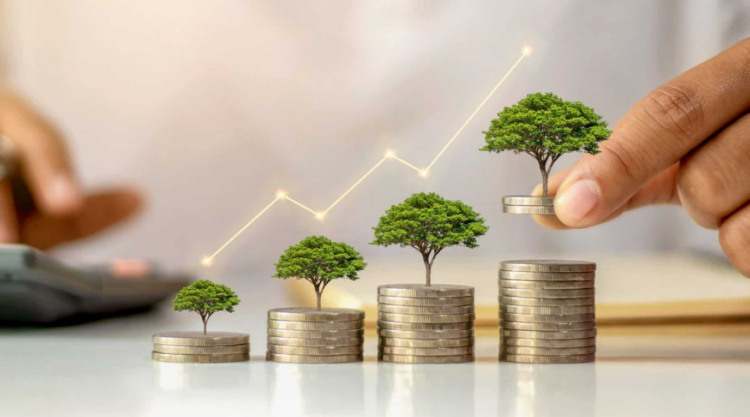If you want to exchange carbon credits, you’ve come to the right place. In this blog post, we’ll discuss the process of exchanging carbon credits and what you need to know to get started. We’ll also provide tips for getting the best possible deal when exchanging credits. So read on!
Page Contents
What is a carbon credit exchange, and how does it work

Source: investorintel.com
A carbon credit exchange is a market that serves as a platform to buy, sell and trade carbon credits. Carbon credits are certificates issued to companies or industries that have achieved a predetermined reduction in their carbon dioxide emissions. In the exchange, participants use the credits as currency to purchase offsets. This helps the global economy transition towards more sustainable practices, allowing polluters to invest in greener solutions and fund clean energy projects worldwide.
The exchange also provides incentives for entities to reduce emissions through systems such as cap-and-trade. To ensure that only verified emissions reductions are targeted, certificates must be validated by an independent third party before being awarded. Once acquired, these valuable contracts can be bought and sold like any other asset would be traded on an open marketplace. This is a growing market and has some great potential, according to https://carbon.credit/.
How can businesses benefit from a carbon credit exchange?
Businesses today are more conscious than ever of their environmental impact. Carbon credit exchanges present an opportunity for companies to reduce their carbon footprint and even benefit financially through being able to sell any credits they have saved. By offsetting their emissions and investing in renewable energy sources, businesses can find several advantages from participating in the exchange system – playing a role in protecting the planet’s future, as well as demonstrating social responsibility to potential consumers and customers.
Additionally, companies may qualify for financial incentives from governments and organizations that encourage the uptake of green initiatives in their operations. Carbon credit exchanges offer an effective way for businesses to gain access to these incentives whilst reducing their environmental impact.
How can individuals benefit from a carbon credit exchange?

Source: chiefexecutive.net
One of the most significant benefits of participating in a carbon credit exchange is the potential for individuals to lower their carbon impact, reduce costs associated with consumption, and promote sustainability efforts within an ever-changing climate. With the ability to purchase or track credits on exchanges, participants can evaluate the impacts of their consumption decisions, like travel choices or purchasing vehicles and appliances.
On a grander scale, these exchanges also provide a platform for organizations such as nonprofits and businesses to invest in green initiatives or use financing methods to create and implement sustainable technologies. In doing so, organizations can make systemic changes at lower cost structures than traditional funding routes.
Moreover, participating in the international carbon credit exchange provides access to global partners that share similar objectives and encourages collaboration among stakeholders. Ultimately, engaging with a carbon credit exchange opens new avenues for individuals and organizations motivated to create positive environmental change.
Ultimately, engaging with a carbon credit exchange opens new avenues for individuals and organizations motivated to create positive environmental change. Exchanges give participants the ability to make informed decisions about their consumption and provide a platform for financing sustainable energy sources. Furthermore, they offer financial incentives that can help businesses achieve greener operations while reducing expenses associated with carbon emissions
What are the risks associated with a carbon credit exchange?
Carbon credits are crucial in addressing climate change, but their actualization requires functioning trading exchanges that adhere to strict protocols. Unfortunately, these exchanges come with severe risks due to the complexity of commodities markets and volatility in carbon credit prices. Operations are subject to the failure of internal systems, malicious computer attacks, and even fraudulent activities, with significant financial losses possible for participants.
Additionally, inconsistencies related to dispute resolution between different countries can result in market confusion and a lack of trust among users. To ensure successful trading on a carbon credit exchange, it is imperative that rigorous guidelines are met and best practices enforced across all nations involved.
How to get started with a carbon credit exchange

Source: thebalancemoney.com
The basics are relatively straightforward if you’re interested in getting involved in the carbon credit exchange. A carbon credit is an allowance to emit a specific amount of carbon dioxide, and taking part in trading these credits can enable you to reduce your emissions while also contributing to societal efforts to combat climate change. Before beginning, it’s important to research whether there are already existing markets in your area or check if your government has programs like cap-and-trade in place.
Additionally, building relationships with organizations already active in the space becomes invaluable as you progress toward learning more about carbon credits trading. With enough dedication and understanding of the opportunities presented by this type of trading, anyone can get started with a carbon credit exchange.
The exchange of carbon credits offers individuals and organizations the opportunity to invest in sustainable projects while also lowering their carbon impact. Participating in this type of exchange allows participants to make more informed decisions about their consumption and global access partners with similar objectives.
However, certain risks are associated with trading on a carbon credit exchange, including financial losses due to market volatility. Additionally, strict guidelines must be met in order to ensure a successful trading experience. To get started with a carbon credit exchange, it is important to conduct research into existing markets and build relationships with organizations active in the space. With dedication and understanding of the opportunities presented by this type of trading
Conclusion paragraph: A carbon credit exchange is a valuable resource for businesses and individuals looking to reduce their environmental impact. Allowing buyers and sellers to trade credits creates an efficient system that benefits everyone involved. Some risks are associated with participating in a carbon credit exchange, but they can be mitigated by understanding the process and taking precautions. If you’re ready to start reducing your carbon footprint, contact us today, and we’ll help get you on the right path.





